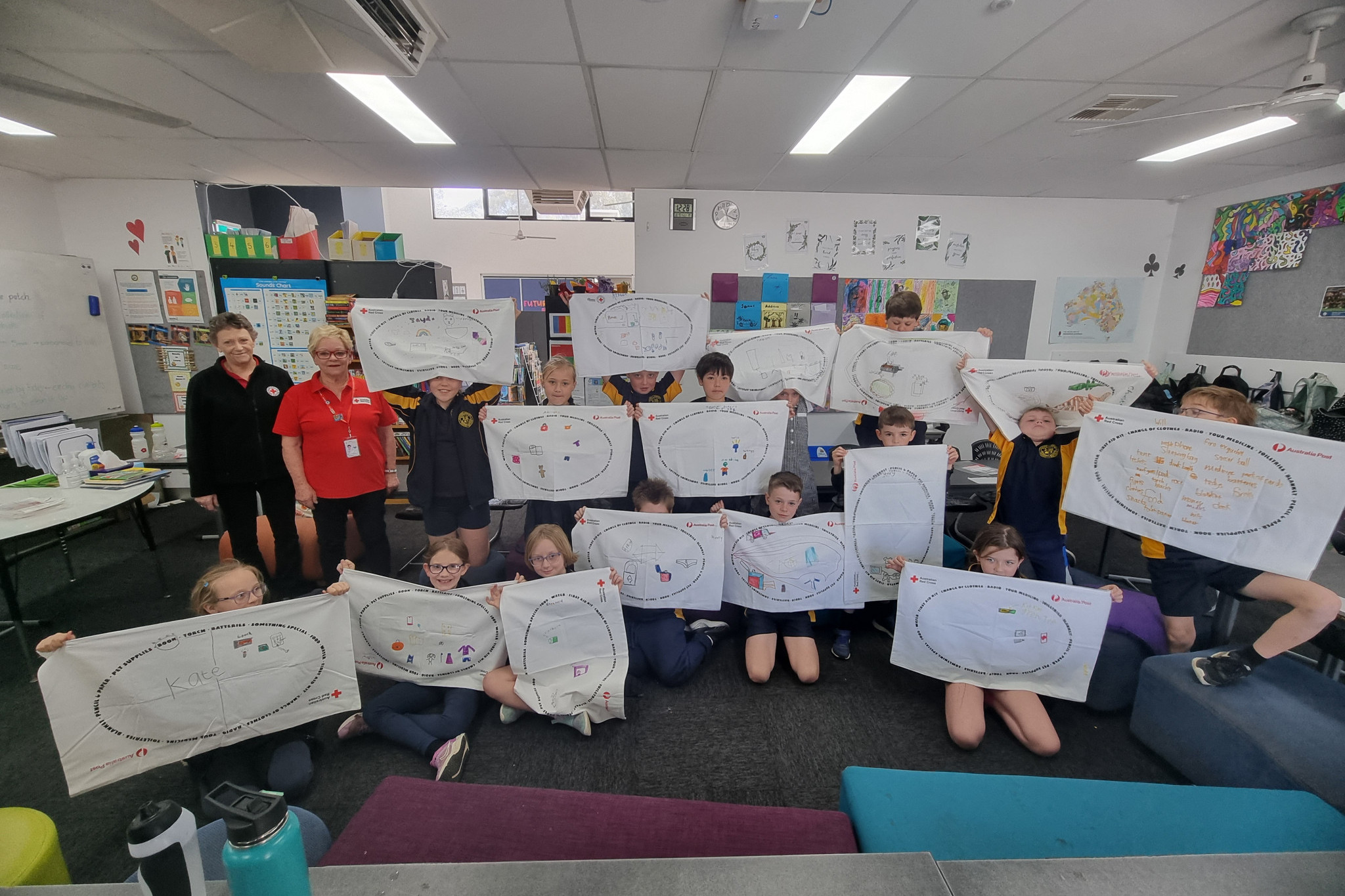General News
24 September, 2024
Case for resilience
The Red Cross Pillowcase Program has been a local hit.

What special items would you take with you if you had to leave home in a hurry?
Students throughout the region had the chance to ponder this question as they took part in the Red Cross Pillowcase Program.
Aimed at children between the ages of eight and 10, the one-hour disaster resilience session is designed to help students prepare for, cope with and respond to emergencies.
Janet Regan is a Red Cross volunteer trained to deliver the Pillowcase Program to local schools.
Ms Reagan said the kids love the challenge of deciding what items to put in their pillowcase.
“Before they start colouring their pillowcase we give them a set of cards with ideas of what they should or shouldn’t take,” she said.
“A couple of them have actually said they will take their beds or the TV. We have to remind them that they can’t fit those things in a pillowcase.
“One or two will want to take electronic stuff so explain that if they are in a relief centre there might not be electricity and they might be there for a few days.”
The Pillowcase Program was started in the US after Hurricane Katrina in 2005, when it was noticed that students evacuating campus used pillowcases to carry their belongings. The program has been adapted to complement the Australian school curriculum, with the age-specific workshops designed to empower children in the event of an emergency.
In 2022, Treasury analysis showed that 68 percent of Australians were living in an area that was covered by a natural disaster. Ms Reagan said that as well as floods and bushfires, children can be impacted by house fires or family medical emergencies where they have to leave their house suddenly.
“We stress to the kids that once they have finished the session to go home and talk to their family members and discuss what we talked about and how important it is to prepare for an emergency,” Ms Reagan said.
“We encourage them to pack small things like a soft football, a deck of cards or Uno, their favourite teddy bear, a photo of their family, a bottle of water, something to nibble on. It’s reassuring for children to have all those things in the pillowcase under their bed or in a cupboard so that, if there’s an emergency, they have their own special things.”